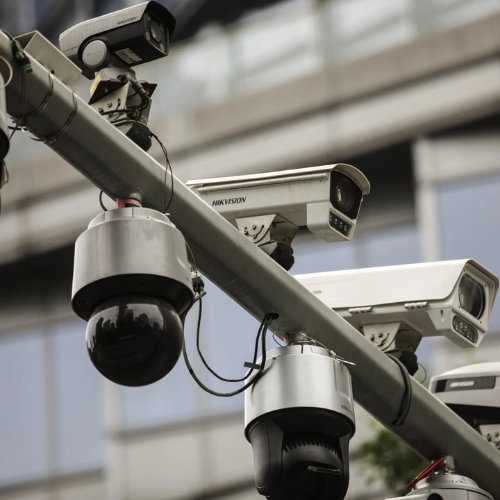The U.S. government is raising alarms about the increasing number of internet-connected Chinese cameras that are being used in important places across the country. These cameras, which can be found in schools, businesses, and even critical infrastructure like energy plants, could pose a serious security risk. The U.S. Department of Homeland Security (DHS) has issued warnings about how these cameras could be used by the Chinese government to spy on the U.S. or even cause disruption in key systems.
These cameras were designed to be simple to use, and they are now widely installed in the U.S. They are cheap and easy to find, making them an attractive option for businesses and even government agencies. But, behind their convenience, there are serious security flaws. The DHS has pointed out several issues with these cameras that make them dangerous. They lack strong data encryption, they don’t have proper security settings, and many come with default settings that allow the cameras to communicate with servers in China. These issues give China a potential gateway to spy on U.S. networks, disrupting critical systems.
How Chinese Cameras Could Be Used for Espionage
The main concern about these cameras is how they could be used to spy on the United States. The lack of encryption and weak security settings in many of these devices makes it possible for someone to gain access to the data they collect. Since the cameras are connected to the internet, they can be accessed from anywhere in the world. This means that, if someone wanted to, they could remotely watch what’s happening through the cameras, track movements, and even get sensitive information about the systems they’re connected to.
According to the DHS, Chinese state-backed hackers have been targeting these cameras for years. They’ve already been exploiting vulnerabilities in these devices for about five years. This means that the threat is not just theoretical—it’s already happening. The cameras could provide a direct way for China to gather information on the U.S. or even tamper with important systems that control the country’s energy supply, chemical plants, and other essential infrastructure.
Ex-Fed Advisor John Harold Rogers Accused of Economic Espionage for China
These cameras could potentially allow hackers to manipulate systems in dangerous ways. For example, they might be able to access the controls of a power plant or gas facility, causing outages or other disruptions. This could have a devastating effect on the country’s economy, security, and daily life.
The Growing Number of Vulnerable Cameras
As of early 2024, the DHS estimates that at least 12,000 of these Chinese-made cameras are installed in critical infrastructure networks across the U.S. This is a huge increase compared to the previous year, which shows that these cameras are spreading rapidly. Despite efforts by the U.S. government to stop the spread of these cameras, including a ban on purchases from some leading Chinese manufacturers, the problem has only grown.
The Federal Communications Commission (FCC) banned the purchase of certain Chinese-made cameras three years ago, but it hasn’t been enough to stop their use in the U.S. One of the reasons for this is a strategy called “white labeling.” This is when foreign businesses import Chinese-made cameras, remove the Chinese brand labels, and put their own labels on the products before selling them in the U.S. This makes it harder for officials to identify where the cameras come from and bypasses the government’s efforts to limit their use.
The DHS is working on ways to fight back against this issue, including spreading awareness about how to spot these Chinese-made cameras. By raising awareness and giving people the tools to identify these products, officials hope to reduce the risk of these cameras being used for spying or other malicious activities.
As the number of these vulnerable cameras grows, so does the danger they pose to the security of the United States. The government is still trying to find a way to stop this threat before it becomes a bigger issue. In the meantime, Americans need to stay vigilant and be aware of the risks associated with using these devices.


